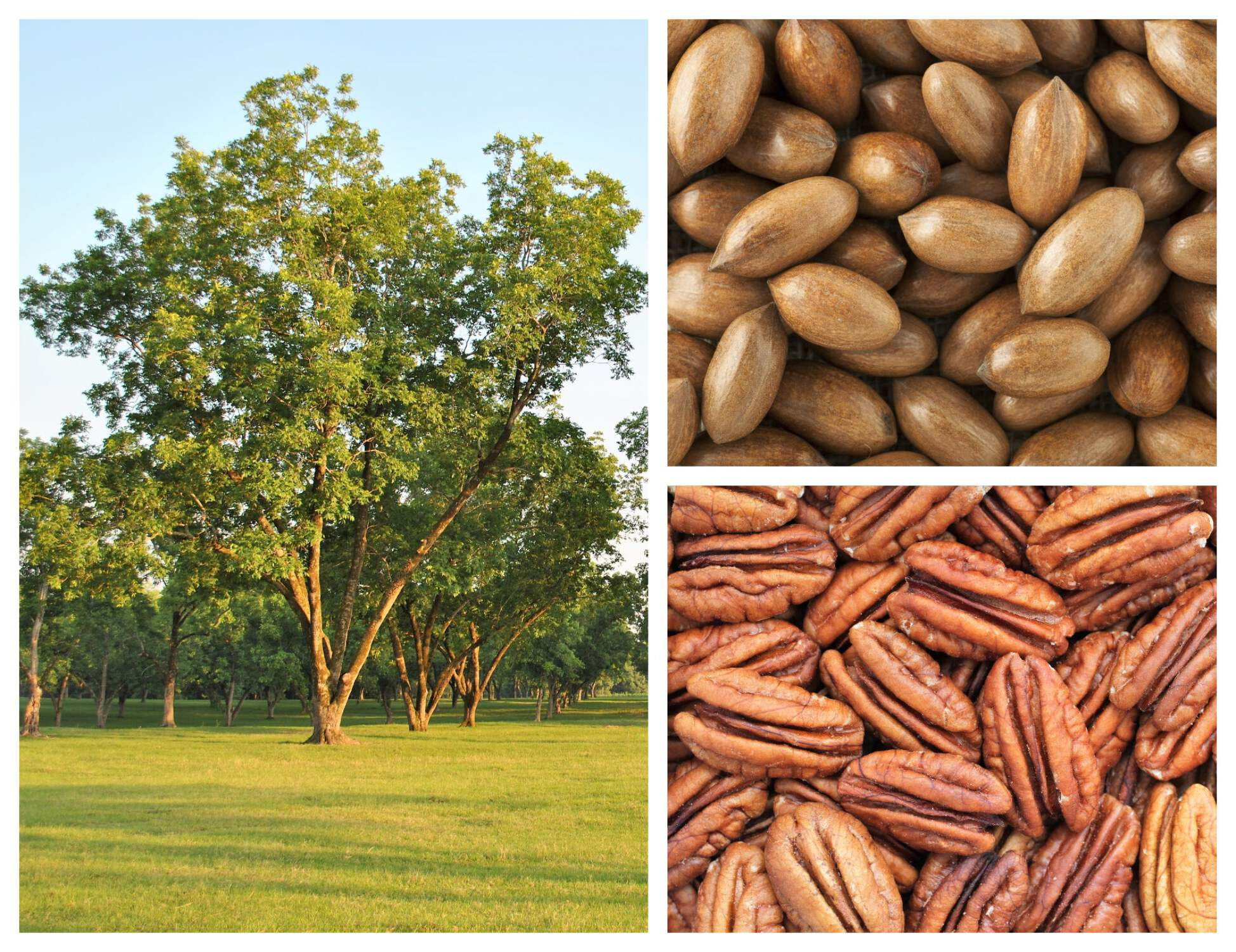
Pecan Tree
Carya illinoinensis
Basic Information
🌿 Family: Juglandaceae🗺️ Zone: 5-9
Other Names:
- Pecan
🌡️ Ideal Temperature : 70°F – 90°F
🔥 Heat Tolerance: Up to 100°F
❄️ Cold Tolerance: Down to -20°F
🌱 Type: Perennial
Layers
- Canopy
Functions
- Edible
- Wildlife Attractor
- Windbreaker
- Erosion Control
- Animal Fodder
- Dynamic Accumulator
Pests
Description
The Pecan Tree (Carya illinoinensis) is a large deciduous tree native to central and eastern North America, known for its delicious and nutrient-rich nuts. Mature trees can reach heights of 18–25 meters (60–80 feet) with a spreading canopy, making them excellent shade providers. Pecan trees have a long lifespan, often exceeding 100 years, and can live up to 400 years under optimal conditions.
🌞💧 Sun and Water Requirements:
- Prefers full sun exposure for optimal growth and nut production.
- Thrives in deep, well-drained soils with a slightly acidic to neutral pH (6.0–7.0).
- Requires consistent moisture, especially during the growing season; however, mature trees are somewhat drought-tolerant.
✂️🫘 Methods to Propagate:
- Grafting: Commonly used to ensure desirable nut characteristics and faster fruiting, typically within 3–7 years.
- Seeds: Can be grown from seeds, but seedlings may take 10 years or more to produce nuts and may not retain parent tree qualities.
🧑🌾👩🌾 When to Harvest:
- Nuts mature in autumn, usually from late September to November.
- Harvest when the outer husks split open, allowing the nuts to fall to the ground.
- Collect fallen nuts promptly to prevent spoilage or predation by wildlife.
Purpose
Pecan trees serve multiple functions in permaculture systems:
- Edible: Produce nutrient-dense nuts rich in healthy fats, proteins, and minerals, consumed raw, roasted, or used in various culinary dishes.
- Wildlife Attractor: Provide food and habitat for various wildlife species, including birds and mammals.
- Windbreaker: Serve as effective windbreaks due to their large size and dense foliage, protecting other plants and reducing soil erosion.
- Erosion Control: Extensive root systems help stabilize soil, particularly along riverbanks and slopes.
- Animal Fodder: Fallen nuts and leaves can be used as fodder for livestock.
- Dynamic Accumulator: Accumulate nutrients like potassium and calcium, enriching the soil as leaves decompose.